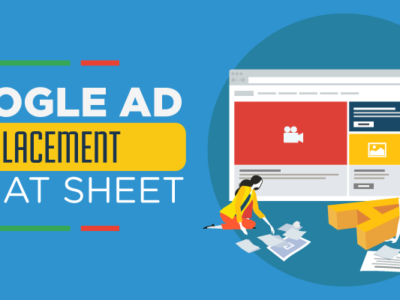Successful online ads target a specific audience – at the right time, in the right place. But how can you set up a marketing campaign that does just that?
A narrower focus means higher click rates, which translates to new customers. And Google Ads is one of the leading tools to drive such success.But using Google Ads is not easy. Plus, it is highly competitive. It takes a bit of know-how from sellers to get a positive ROI.
Even with great organic search ranks, your results still need a solid boost in Google Search. That is where Google Ads comes in.
Thousands of businesses rely on Google Ads to promote their brands and that includes your competition. Google Ads and paid advertising should be a solid part of your marketing strategy. It’s the access gate to a wide array of customers, waiting to learn about your brand and potentially become loyal users of your products or services.
Luckily, that is why we’re here today. In this post, you will learn how Google Ads works, and some great hacks to improve engagement rate.
What is Google Ads?
Image: Google Ads
Simply put, this is Google’s advertising platform. Google Ads was first launched in 2000 as Adwords. In 2018, the service was rebranded to Google Ads.
You can usually locate Google ads at the top of Google’s organic search results. But sellers can also display ads across several channels. For example, YouTube, Google Maps, Google Play, and even on your own website.
The service enables brands to showcase products and services, and at the times when your target customers are more likely to be looking for such ads.
Note that Google Ads is a Pay-per-click (PPC) service. That means you, the seller, pay for each user impression on a specific ad.
Sellers can also allocate a fixed monthly budget, so you do not exceed your spending over time.
Thus, Google Ads is designed to drive traffic, increase customer engagement, and boost conversions at your own pace. It gives sellers a lot of control and flexibility with their ads.
Why Advertise Using Google Ads?
According to HubSpot, Google Ads boasts an 8% click-through rate, and over 6 billion interactions every day. Plus, Google’s Display ads generate around 180 million monthly impressions.
Being 20 years ahead of the curve, Google Ads has ample experience in the paid ads field. And the stats speak for themselves. Let’s take a look:
- Google Ads appear on 41.5% of search queries.
- 46% of user clicks go to the top 3 ads in the search results.
- Google Ads boasts an average conversion rate of 75%.
Overall, the ROI for Google Ads is 8:1. So, for every dollar spent on Google Ads, brands make eight dollars in revenue (on average).
According to WebFX, online ads boost brand awareness by 80%. So, it makes sense that sellers should take advantage of the most used website online.
8 Google Ads Hacks & Best Practices
Perhaps you have already tried to advertise on Google, but with underwhelming results. There could be many reasons for this, but do not despair.
With the proper tricks, your Google Ads campaigns could very well double your engagement rate. Here are some simple, but very effective practices to boost your ads on Google.
1. Set Up Conversion Tracking
Disruptive Advertising states that 42.3% of Google Ads accounts lack conversion tracking. This is a huge oversight among ecommerce sellers.
Conversion tracking basically measures the performance of your ad against predetermined metrics and key performance indicators. You can set up conversion tracking under the measurement tab
Source: Invisible PPC
Proper conversion tracking is key to managing your ad budget where it actually drives sales. It helps sellers keep tabs on user’s downloads, purchases, and interactions with your brand.
The Google Ads Help Center offers a complete guide on how to track conversions. This includes tracking on websites, phone calls, apps, and even offline.
2. Invest in Relevant Keywords
Conversion tracking will help you see which keywords get the better results. Conversely, you will also locate the search terms that deliver a low ROI.
Filter out the keywords that have failed to make a conversion. Also, highlight the terms which have not had a tangible result in recent times.
Once you get the results, concentrate your ad spend on the high-conversion keywords.
Go with specific terms that help narrow down your brand’s value. In time, you will find a keyword mix that delivers the best results for your ads.
This takes a bit of tweaking, of course. You won’t find the best keywords for you until you try them out on a real campaign. Do not shy away from trial and error, as it might be an efficient way to find the mix that works best for you.
3. Take Advantage of Negative Keywords
Negative keywords are semi-related search terms for your ads. It’s not ideal to rank for such keywords. In fact, Google may pull you from the bid of such terms.
However, you can take advantage of negative keywords. The trick is to be selective of the terms that you use.
You can include negative keywords by placing a negative symbol before the search term. For example: “-jacket.”
4. Use Match Types
Match Types allow you to pair up your ads with specific search queries. Sellers can choose to do so by using 4 match types:
- Broad. This is the default setting. It matches any keyword within a phrase to a search query.
- Modified Board. Here, you can select specific terms, and lock them in with a keyword phrase. So, all your search matches will include that term.
- Phrase. This setting matches search queries with specific phrases within your ads.
- Exact. Keeps your phrases intact, and only matches with queries that use the exact keyword phrases.
5. Boost Your Google Ads Quality Score
As its name states, the Google Ads Quality Score rates your ad’s quality. It considers click-through rates, keyword relevance, and landing page quality.
Quality Scores also count towards determining your AdRank. This is the metric that Google considers to determine your ads’ placement.
Here are the key elements that influence Google Ads Quality Score
Source: Kparser
And do not forget about biddings to improve your ranking. Google Ads bidding refers to the investment you are willing to pay for ad clicks.
So, the better your quality score and your bids, the better ad placement you will get.
6. Invest in Relevant Times and Locations
As we said, Google Ads lets you set up specific times and places to show your ads to customers.
For better results, it is crucial that you know the time and locations where your campaigns perform best. Here’s how you can review such data:
- Log in to Google Ads
- Click on “Predefined Reports”
- For a time report, select the “Time”
- Here, you can pick out time frames based on days and hours
- For a location report, click on “Geographics”
You can find your Google Ads reports at the top of the dashboard.
Source: PPC Hubbub
Review both reports carefully. You will find the best moments to run your ads and in the locations with a higher user interaction.
Once you go through the data, reallocate your bids to boost your ad’s engagement rate. This way, you will cut your ad bids while driving conversions at the same time.
Example of Google Ads report featuring daily conversions vs. ad position.
Source: Search Engine Land
7. Create Landing Pages that Convert Users
A great ad is only the first part of the equation. Successful campaigns also invest in landing page optimization.
Great landing pages are more than creating a destination for customers. It is about engaging with the user’s needs. This is the place where you can solve their questions, or show them how you can help to meet their needs.
Also, make sure your landing page uses the same keywords as your ads. Include as many of those key terms as possible.
This will help smooth out the transition between engagement and conversions. Plus, it will boost your Quality Score.
8. Consider Using Google Ads Retargeting
It takes a few visits for users to buy a product from a website. This is where Google Ads Retargeting can help out.
Retargeting means that you can showcase ads to people who already visited your website. Sellers can even target specific keyword pages, so the retargeting ads take customers to specific pages.
Retargeting uses cookies to track users, so you can ‘follow’ them with custom ads. The goal is to build rapport with recurring users so that, in time, they may turn into customers.
Final Thoughts
The ultimate goal is to make your ads as relevant as possible. Match your keywords with the ad’s headline and copy. Then, pick the best time and locations to attract more customers.
And remember, offer them a valuable solution to their needs. Then, court them so they know they can trust you. It is a long process, but the results are worth it, especially when using the above hacks.
Use the tips above to set up a solid Google Ads campaign or hire a search engine marketing agency in the Philippines like Spiralytics. You will drive web traffic and user engagement in no time!






